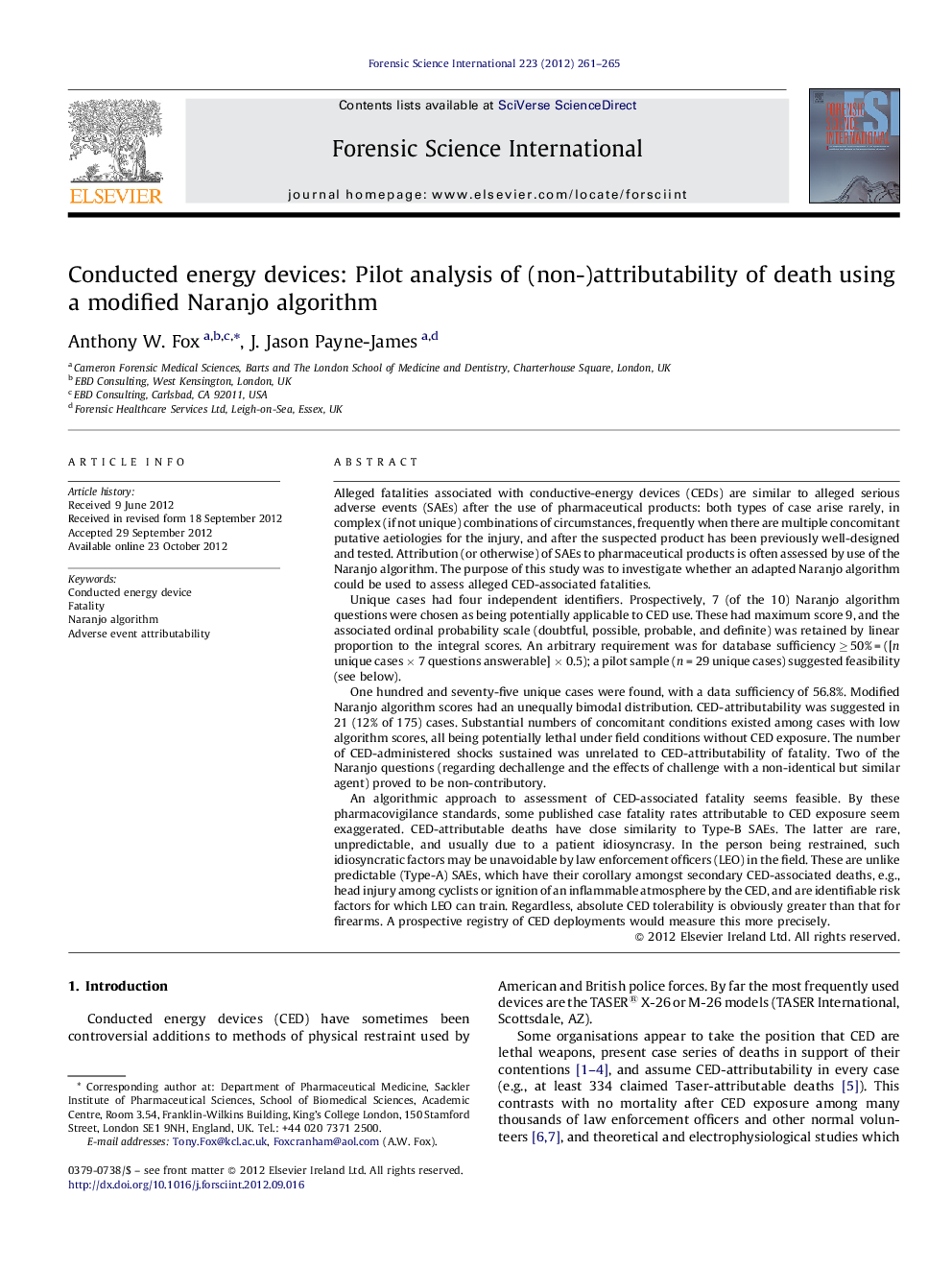| کد مقاله | کد نشریه | سال انتشار | مقاله انگلیسی | نسخه تمام متن |
|---|---|---|---|---|
| 96375 | 160462 | 2012 | 5 صفحه PDF | دانلود رایگان |

Alleged fatalities associated with conductive-energy devices (CEDs) are similar to alleged serious adverse events (SAEs) after the use of pharmaceutical products: both types of case arise rarely, in complex (if not unique) combinations of circumstances, frequently when there are multiple concomitant putative aetiologies for the injury, and after the suspected product has been previously well-designed and tested. Attribution (or otherwise) of SAEs to pharmaceutical products is often assessed by use of the Naranjo algorithm. The purpose of this study was to investigate whether an adapted Naranjo algorithm could be used to assess alleged CED-associated fatalities.Unique cases had four independent identifiers. Prospectively, 7 (of the 10) Naranjo algorithm questions were chosen as being potentially applicable to CED use. These had maximum score 9, and the associated ordinal probability scale (doubtful, possible, probable, and definite) was retained by linear proportion to the integral scores. An arbitrary requirement was for database sufficiency ≥ 50% = ([n unique cases × 7 questions answerable] × 0.5); a pilot sample (n = 29 unique cases) suggested feasibility (see below).One hundred and seventy-five unique cases were found, with a data sufficiency of 56.8%. Modified Naranjo algorithm scores had an unequally bimodal distribution. CED-attributability was suggested in 21 (12% of 175) cases. Substantial numbers of concomitant conditions existed among cases with low algorithm scores, all being potentially lethal under field conditions without CED exposure. The number of CED-administered shocks sustained was unrelated to CED-attributability of fatality. Two of the Naranjo questions (regarding dechallenge and the effects of challenge with a non-identical but similar agent) proved to be non-contributory.An algorithmic approach to assessment of CED-associated fatality seems feasible. By these pharmacovigilance standards, some published case fatality rates attributable to CED exposure seem exaggerated. CED-attributable deaths have close similarity to Type-B SAEs. The latter are rare, unpredictable, and usually due to a patient idiosyncrasy. In the person being restrained, such idiosyncratic factors may be unavoidable by law enforcement officers (LEO) in the field. These are unlike predictable (Type-A) SAEs, which have their corollary amongst secondary CED-associated deaths, e.g., head injury among cyclists or ignition of an inflammable atmosphere by the CED, and are identifiable risk factors for which LEO can train. Regardless, absolute CED tolerability is obviously greater than that for firearms. A prospective registry of CED deployments would measure this more precisely.
Journal: Forensic Science International - Volume 223, Issues 1–3, 30 November 2012, Pages 261–265